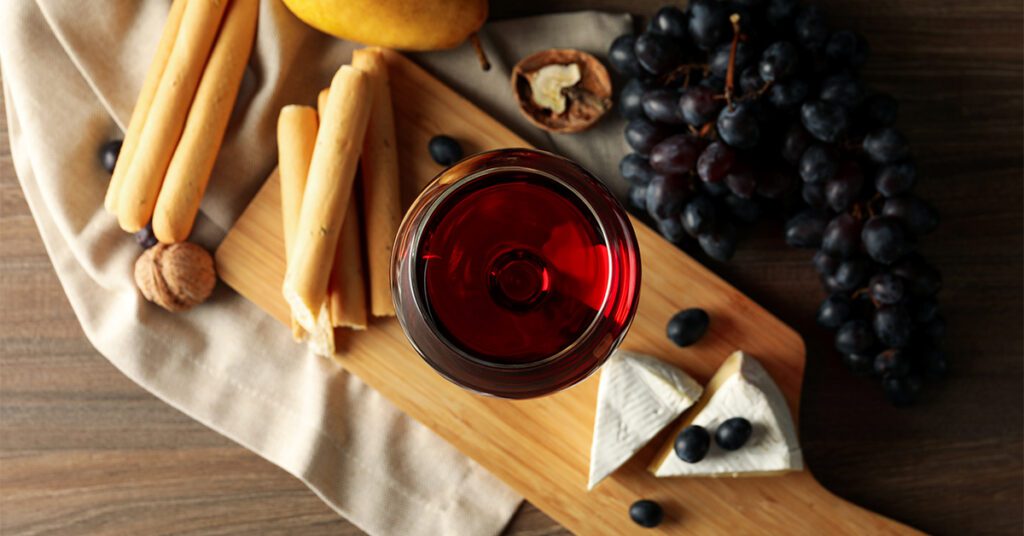Friday 21 July
By Milena Sommeliers
Welcome to the exciting world of wine, where each glass is a gateway to surprising flavors and aromas. As a sommelier, I want to provide you with practical and easy tips to help you delve into this wonderful universe with confidence and enjoyment. Join me as we discover together the pleasures that wine has to offer. Whether you are a beginner, an enthusiast, or simply a wine lover, I am here to assist you in taking your first steps. Just follow your palate and enjoy!
Experiment with different types of wine
When it comes to starting your wine journey, it’s exciting to explore different types:
Sparkling wines: These wines are characterized by their effervescence and bubbles, which are produced through a second fermentation in the bottle (traditional method) or in a closed tank (Charmat method). Champagne is one of the most well-known sparkling wines, but there are also other varieties such as Spanish cava, Italian prosecco, and the French sparkling wine called Crémant.
White wine: Primarily made from white grapes, white wines tend to be lighter, very fresh, and have higher acidity. Some popular grape varieties include Chardonnay, Sauvignon Blanc, Riesling, and Albariño.
Rosé wine: Made from red grapes but allowed a brief contact with the skins, giving them a pink color. Rosé wines are usually light, refreshing, and fruity. Some popular varieties are Grenache, Syrah, Zinfandel, and Tempranillo.
Red wine: Produced from red grapes, red wine is typically richer and more robust in flavor. It can range from light and fruity to more intense and full-bodied. Some common grape varieties are Cabernet Sauvignon, Merlot, Pinot Noir, Syrah, and Malbec.
Sweet wines: Sweet wines have a higher residual sugar content due to the partial fermentation of sugar in the grapes. These wines often have sweet and fruity flavors. Some well-known examples are Sauternes, Tokaji, Moscato, and Pedro Ximénez.
Start by trying different varieties from each category and discover which ones you enjoy the most!








Let's Begin with Affordable Wines
Always keep an open mind. When you start in the world of wine, there’s no need to spend a lot of money. There are many affordable and delicious options available on the market. Look for young, fresh, and easy-to-drink wines. These wines are perfect for beginners and will allow you to explore your preferences without breaking the bank.
- Damana 5 Tempranillo 2018, Ribera del Duero – España $375 La Europea Also available by the bottle at Salamanca Prime, Cava Salamanca, Pueblo Pibil de City 32 & The Yucatan Country Club (of course the price will be higher)
- Montes Classic Serie Cabernet Sauvignon 2022, Valle de Colchagua- Chile $299 La Europea
- Louis M.Martini Cabernet Sauvignon 2020, Sonoma $757 Chedraui Selecto
- Norton Colleccion Malbec 2021, Mendoza- Argentina $259 La Europea








Observe, Smell, and Taste
When you have a glass of wine in your hands, take a moment to observe it (sight). Pay attention to its color and reflections, ranging from deep reds to pale whites.
Bring the glass to your nose and take the opportunity to smell its aromas. Can you detect fruity, floral, or spicy notes?
Finally, take a small sip and allow yourself to taste the wine (mouth). Is it sweet or dry? Enjoy its body, balance, and persistence. Pay attention to the temperature: lower temperatures can enhance freshness and acidity in white wines, while higher temperatures can soften tannins and highlight flavors in red wines.
Keep in mind the following: if the wine smells strongly of cork, vinegar, or excessive dampness, it is no longer in good condition.
Learn to Read Labels
Wine labels can seem overwhelming, but don’t worry, I’m here to guide you. Look for key information that will give you an idea of the wine style you have in your hands.
- Winery and/or brand name.
- Grape variety, for example, Cabernet Sauvignon or Chardonnay.
- Country and region of origin. Some may even have a “Denomination of Origin.”
- Vintage year: refers to the year when the grapes used to make that wine were harvested.
- Indications, such as “dry” or “semi-sweet.”
- Alcohol content, expressed in volume. If you’re looking for a light and easy-to-drink wine, make sure the alcohol level doesn’t exceed 13%.
- Aging in barrel and bottle: Young, Crianza, Reserva, and Gran Reserva.
The back label: located on the back of the wine bottle. Here is where you can find information about the winemaking process, wine pairings, its description or history, seals, certifications, and other details. Take some time to read it, and you’ll learn more about the great wine you have in your hands.
Remember that not all wine labels include the same information, and the presentation may vary depending on legislation and labeling standards in each country. However, these elements are common and can help you better understand the wine you’re considering buying.
Discover your Flavor Preferences
We all have different flavor preferences, and that’s what makes the world of wine exciting. Try different styles and grape varieties to discover what you enjoy. Do you lean towards more fruity and smooth wines, or do you prefer intense and robust ones? There are no right or wrong answers.
Remember that describing your wine preferences is personal and subjective. The most important thing is to enjoy and find those wines that bring you satisfaction and pleasure. Just follow your palate and enjoy!
Experiment with Food Pairings
One of the best ways to enjoy wine is to combine it with food, finding harmony and balance between flavors, food textures, and wine aromas.
Recognize textures: tactile sensations such as fatty, crunchy, starchy, or fibrous, etc.
Recognize flavors: What flavors does the wine have? What about bell pepper, orange, tomato, and olives?
Suggestion: Experiment with simple food pairings. For example, a light red wine can complement pasta with tomato sauce, while a fresh white wine can enhance the flavor of grilled fish. Additionally, if your recipes call for wine, use the same wine you’re going to drink during the meal, and you’ll create a perfect pairing.
Let your culinary creativity mix with your love for wine!








Enjoy, Reflect, and Share
While you enjoy wine, reflect on your sensations and experiences. Do you enjoy the flavors? Is there any particular nuance that catches your attention? Does the wine evoke any memories or emotions? Take your time and appreciate each sip, allowing the wine to transport you through its complexities. Remember, sight, smell, and taste are skills that develop with practice. The more you explore and experience different wines, the more you’ll develop your palate and ability to appreciate wine. Attend wine tastings and workshops. When we taste with other people, we learn much faster and benefit from their unique tastes. It never hurts to know what kind of wine your partner enjoys.


About the writer:
Milena Guerra, a Publicist and Sommelier, graduated from the Argentine School of Sommeliers, certified by the International Sommelier Association (ASI), with 12 years of experience in the wine and gourmet products industry.





Excellent Description, each of the topic are very well described! I’ll have this in mind next time I am at the winery, they’re plenty around here in Adelaide!